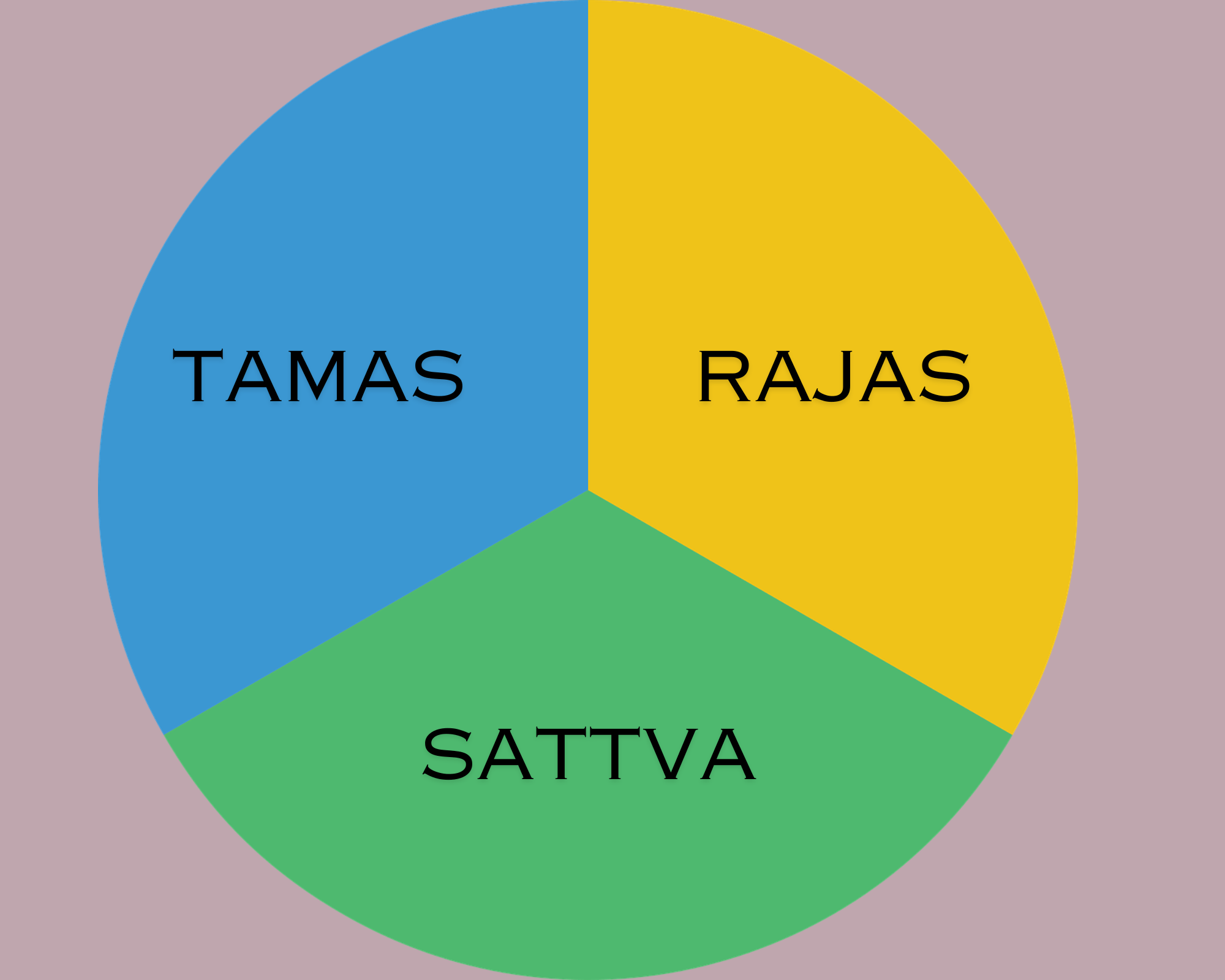According to yoga philosophy there are three gunas, characteristics or qualities, that inhabit everything around us, both living creatures and objects. For humans, the trick is to find a balance between the three, for a harmonious coexistence in Nature and with ourselves.
The gunas often need to be recalibrated, in order to retain this balance. The first one is the tamas, which represents density, gravity and darkness, like concrete matter. Think of hard packed soil, for example or the bass note in music, or the colour black. The tamasic part of our being is the physical body, and it has to be dense – we don’t want porous bones, for example.
The second quality is rajas. It comes from Raj, king, leader, the one who has to make decisions and act, or else…The rajas are the dynamic forces, actions and energy.
The third quality, sattva, is the enlightened knowledge, characterised by serene harmony, lightness, lucidity and equilibrium. But it is a quality which cannot exist on its own. An object or person who is purely sattvic, lacking tamas and rajas, would be ephemeral, like the morning mist. It, he or she would lack substance and energy. Only by infusing tamas and rajas would the nightingale sing, the oak grow and shed its leaves or the yogi find his or her place in the yoga room.
Our constant struggle is to find the balance between the gunas. The yoga practice is about enlarging the sattvic slice of the pie. If we come onto the mat feeling sluggish and heavy – there’s likely to be too much tamas – or jittery and stressed – too much rajas. To set the balance straight, we need to reduce the tamas or the rajas, which we do by practicing correctly according to the needs for that day.
The gunas are also in our mind. Frenzied thoughts are a sign of too much rajas in an agitated citta, mind. We need calming exercises, like inversions and forward folds with long exhales, to clear reduce the rajas.
Dark and depressed thoughts with feelings of worthlessness are definitely tamasic. Energising backbends, and jumps, long powerful inhales help squeezing the tamasic mind to leave more room for the energizing rajas. If we are filled with a calm energy after practice, that means that the sattvic guna has pressed the excess of the other gunas out. I visualize it very clearly as a pie chart and I also know when I come to my mat or my cushion what my state is, and what is needed.
When I first came to yoga, there was very little space for sattvic calm in my life. As a journalist, I was ruled by impatient editors with harsh deadlines and competition from colleagues to find the story. I was either on a turbo overdrive (rajasic) or wiped out (tamasic). Very rarely would I sit down with a sattvic Mona-Lisa smile on my lips. I can’t say that happens very often nowadays either, but there is more balance, more room for sattvic contemplation.
